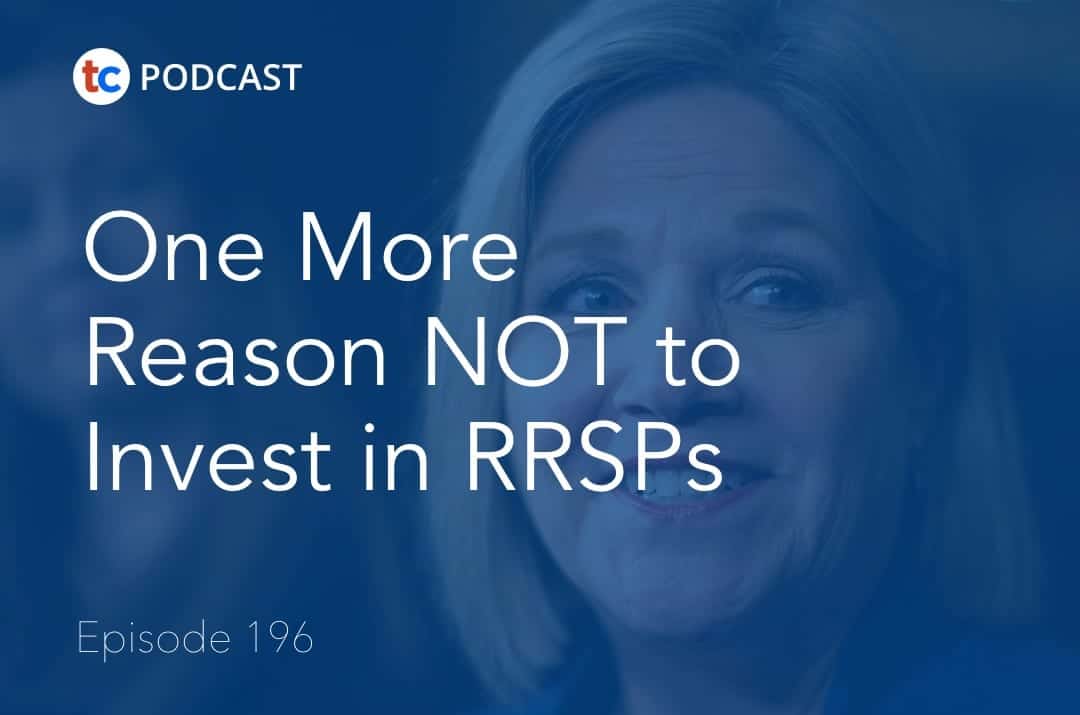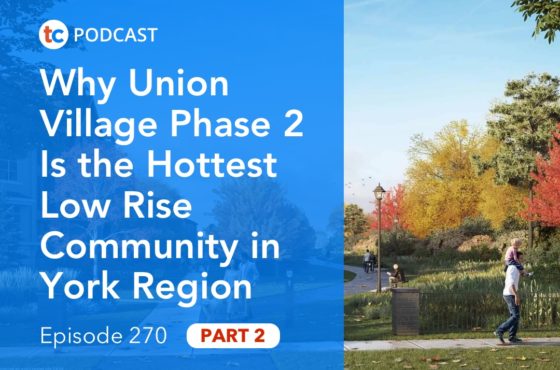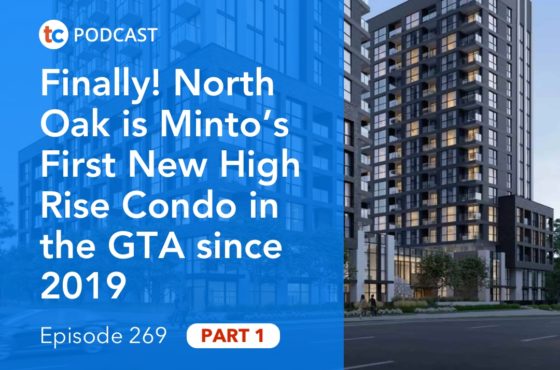One More Reason to NOT Invest in RRSPs

The provincial election is in full swing in Ontario. Soon we will have a new government – either PC or NDP. The NDP are promising to raise taxes on the highest income earners in Ontario. This is yet another reason to not invest in RRSPs. Find out more on this episode.
EPISODE HIGHLIGHTS
1:10 Big part of the NDP platform is that they want to raise taxes.
3:01 Marginal Tax rates.
4:04 RSPs are making less and less sense.
6:13 The more successful that you are, the more you’re going to be taxed.
8:13 Constantly raising of income taxes on the highest income earners.
11:13 Major divergence between the rich and the poor.
13:23 The government is relying more,and more on the top 1%, the top income earners.
16:00 How are the 1% likely to respond to this increasing tax pressure?
Click Here for Episode Transcript
Andrew la Fleur: The NDP has just given me one more reason not to invest in RRSPs. Find out what I mean on today’s episode.
Speaker 2: Welcome to the True Condos podcast with Andrew la Fleur, the place to get the truth on the Toronto condo market and condo investing in Toronto.
Andrew la Fleur: Thank you so much for listening once again. Andrew la Fleur here, I appreciate your time and thank you for taking a few moments out of your day, wherever you are, whatever you’re doing, to hear what I have to say. So I want to talk about the election and things that are happening right now in Ontario. So big provincial election coming up, we’re about to elect a new government, it looks like liberals are out. Looks like it’s coming down to either the provincial conservatives, the PCs or the NDP. The NDP’s come out of nowhere really to charge ahead in some polls, they’re in the lead in something, or neck and neck basically with the PC, so very interesting time. There’s a very realistic chance that the NDP could form the next government in Ontario and it’s been really a generation since we’ve had an NDP government in Ontario.
Andrew la Fleur: Obviously no surprise, a big part of the NDP platform is that they want to raise taxes, raise taxes specifically on the … as they call them, “The wealthiest Ontarians.” People making the most amount of money over, I believe it’s $220,000 dollars. They want to raise taxes another 2% or so, so they’re talking about bringing the top marginal tax rate up from about 53% to about 55%. I mean, it’s shocking just to see that number continue to go higher and higher and higher but as I said, anything’s possible.
Andrew la Fleur: Once we cross that 50% threshold, which we were under that forever, for the top marginal tax bracket. Once we as a society, have accepted the fact that it’s okay for the government to take more of what you earn than what you get to keep, they get a bigger share of your money and production and wealth that you’ve created and work that you’ve done, they get a bigger share of it than you do and we accepted that a few years back. So once we’ve crossed that threshold, all bets are off, anything’s possible, 70, 80, 90% is possible in an environment where we’ve crossed that 50% threshold. The government now has … we’ve accepted as a society they can do that. So no big surprise then that they’re saying, “Yeah, let’s bump it up.” Let’s bump up that tax bracket even more. So want to give you a few points on this interesting turn of events here from a real estate investor’s perspective.
Andrew la Fleur: So number one is that the marginal tax rates, as I’m mentioning, they’re just going to keep increasing. This is just going to continue over time. I believe very strongly and you don’t have to be a genius to figure it out, just look at the history of tax rates in this country, over time they keep going up, they do not go down. For the most part, tax rates do not ever come down. We can expect, especially on income, tax rates to keep going up, and up, and up and it’s not just … and it’s specifically on those people who are at the top end of the income earning spectrum. So people who make the most money, who claim the highest income, they’re going to continue to bear a larger and larger share of the overall tax burden.
Andrew la Fleur: So this brings me to my second point and the title of this podcast, which is for me, my opinion and many other investors out there like me, possibly yourself if you’re a seasoned real estate investor listening to me today, that is RSPs are making less and less sense. We just are getting more and more reasons to not invest in RSPs. Again, point of an RSP is to defer your taxes or to lower your tax exposure or to not pay taxes today but eventually, you put that money in an RSP which you don’t have to pay tax on, eventually you do have to pay taxes on it when you pull it out. When you pull it out, you pay taxes on it whatever your tax rate is at the time.
Andrew la Fleur: If you believe like I do, that in the future tax rates will be higher than in the present, then fundamentally, you don’t like where that is going. If you believe that your … If your goal and aspirations are to live a high quality of life in your later on years, in the back third of your life, then you are in the middle third of your life and your big income earning years, so to speak, your career years, your climbing the ladder years. If you want to still be earning a lot of money and living a high quality life style in those later years, then most likely, your tax rate is going to be very similar to what it is today. So the amount of income that you’re going to earn and the tax rate you’re going to be paying is going to be very similar.
Andrew la Fleur: So, to put money in an RSP now and not pay the 53%, only to pay 55% later on, or let’s say 30 years from now, that 55% is 65%, well I’d rather just pay the 53% right now than pay the 65% in 20 or 30 years. Just get the money back in my pocket, pay the taxes, take the hit, bite the bullet and get my money out into the marketplace and invested in income producing assets like real estate. I believe very, very strongly in that for me personally, and I gave up on RSPs a long time ago, once I realized that the more successful that you are, the more you’re going to be taxed and RSPs make even less and less sense.
Andrew la Fleur: So here we are once again, the NDP government and if they get in, they raise taxes another 2%, it’s just another nail in the coffin for me for investing in RSPs and another reminder that you’ve got to take control of your own destiny. You cannot be relying on your pensions or the government, or your company, or big brother, or whatever it is. You’ve got to take control of your own destiny, you’ve got to be a direct investor, take control of your money, start building a portfolio of assets. Real estate, to me is the best asset that you can buy over the long term, there’s nothing like it, and putting your money in RSPs, unfortunately, you’re locking it up, you’re putting it in jail, you’re very restricted in what you can do with that and certainly you cannot buy real estate in an RSP. So that for me is just another nail in the coffin of the RSP, just as a concept, as an investment idea.
Andrew la Fleur: So we’ve just been told and taught and trained from a very young age in this country that you’ve got to max out your RSPs and put your money in RSPs and all this, but again, I’m turning that on its head and I’m saying RSPs do not make any sense if you have big aspirations, big goals and you want to live a high quality life. If you’re earning a high income and you plan on earning a high income in the future, to me it just doesn’t make sense.
Andrew la Fleur: So the third point. This is really, to me, it’s a symptom of a bigger problem, this constantly raising of income taxes on the highest income earners. It’s a symptom of a bigger problem, it’s something I talk about a lot on this podcast as a recurring theme, and that’s this idea of the disappearing middle class. So the middle class as we know it, as the American dream, the Canadian dream, the dream of our parents in the 50s and 60s that worked very well and the booming middle class. That is over, that era is over and if you look at all the trends, everything is pointing towards the rich are getting richer, the poor are getting poorer, the middle class are being squeezed out. The groups that are growing, the very rich, the top end of the spectrum is growing. The bottom end of the spectrum is growing, the middle class is being squeezed out and there’s an increasing portion … The pie, if you think of it as a pie, the pie is being eaten up more, and more, and more by the top 5% or the top 1% especially.
Andrew la Fleur: So people at the top end of the spectrum are taking a bigger and bigger and bigger share. The middle class which … the dream of the middle class, the hope of the middle class, the idea that most people would get most of the pie and the rich at the top, the few amount of the rich would get a small piece and the poor at the bottom, they’d be small and they’d get a small piece, but most of the people would be in the middle and most of the pie would go to them. That is dying, it’s going away. The rich are getting richer and the poor are getting poorer. Look at where all the wealth is going, it’s all going to the 1%, more and more, and more. It’s accelerating, this problem is accelerating.
Andrew la Fleur: The government’s realized this and governments are saying, “We’ve got to increase our tax revenues, we can’t put the burden on the middle class because the middle class is going away.” If you look at real incomes over time, there’s this amazing chart that I saw on Twitter this week, like real incomes over the last 50, 60 years, taking account for inflation. Real incomes increase significantly from 1950 to 1972 or something like that and then for the past 30 years or so, real incomes has been pretty much flat. There’s been very, very little growth in actual real incomes for most people. If you talk to most people in the middle class who don’t have assets, who aren’t relying on their income, they tell you that’s true. People don’t feel richer than they did 20 years ago, if they’re the middle class. There’s no growth there, it’s very stagnant but if you talk to the 1%, the 1% are booming, it’s high times. It’s really this major divergence between the rich and the poor.
Andrew la Fleur: What do the rich end of the spectrum, the 1%, what do they all have in common? It’s they have assets, they own the assets. The middle class do not own any assets, they’re relying on income alone to build their wealth and they’re just stuck on the hamster wheel. If you’re relying on income alone, you’re living paycheck to paycheck, you’re never going to get ahead, you’ve got to own assets. Owning assets is the only way to grow your wealth, it’s the only way to see that curve for you, for you personally go up, up, up over the long term, you’ve got to own assets, you’ve got to build a portfolio of assets and again, real estate is the best asset out there that you can buy.
Andrew la Fleur: So the last point is, who actually pays the taxes? Well there’s some interesting stats out there I was also seeing on Twitter this week in Canada and Ontario. The numbers are staggering. In Ontario, there’s something like three million people in Ontario paying no income tax at all. Three million people pay no income tax at all. Meanwhile, the top 1% of people, which is like … I don’t have the number in front of me but it’s probably like a couple of hundred thousand people or something, they’re paying 26% of all income taxes, are paid by the top 1% of income earners. 26%. Can you imagine what would happen if that small group of people, that 1% of people, if they all just decided to up and leave? Or the all disappeared, or they all got wiped out by some epidemic disease that only affected rich people or something like … ? Can you imagine 26% of the government’s income just disappeared like that, because this 1% of people were gone? Right? It’s interesting to think about.
Andrew la Fleur: I mean, obviously it’s never going to happen, but my point is just that the government is relying more, and more ,and more on the top 1%, the top income earners and I believe that over time, that 26%’s only going to go up, and up, and up. The government sees what’s happening, the government sees that they can’t figure out how to solve this problem of the disappearing middle class, this is a global issue, this is not just an Ontario issue, it’s not a Canada issue, this is a global issue, it’s across the world, we’re seeing this everywhere that the top 1% are eating up more and more of the pie, they’re taking a bigger and bigger share. At some point … going on a side tangent here, but this might result in somewhat of a major class war of some kind, literally an actual war might break out, or wars might break out because of this extreme divergence between the rich and the poor. It’s getting crazy.
Andrew la Fleur: This used to be the kind of thing you would see in very poor countries only, where the rich sort of control everything. Now, we’re seeing it increasingly in the Western world as well. It’s much worse, I would say, the stats seem to show it’s much worse in the United States, in the US, than it is here in Canada, but it’s still a major, major problem and it’s not good for our society over the long run. However, it’s a reality that we have to acknowledge and know that it’s there and plan for it as individuals and as investors, so we can expect, as condo investors, if you are a condo investor, most likely automatically, by default, you’re probably in the top 5%. Very likely you’re in the top 1 or 2% if you are able to invest in properties, because most people are obviously not able to do that.
Andrew la Fleur: So if you’re listening to this, you are an investor, you can expect that 26%, you paying 26% of all the income taxes, that number’s going to rise over time. Governments are looking at this and saying, “We can’t tax the middle class, they’re barely scraping by. We can’t tax the lower class because we don’t tax them at all and so who are we going to tax? The middle class is disappearing, so where are we going to get this revenue from? We’re going to get this revenue from the top. Top 2%, top 1%. We’re going to take more and more and more from them, mostly through income taxes.” They will probably also look at ways of getting it elsewhere, but it’s going to be mostly through income taxes.
Andrew la Fleur: So it leads me to my last point on this which is how are the 1% likely to respond to this increasing tax pressure? Well, pretty simple. If you’re in the 1% and you’re realizing that you’re being taxed more and more and more, the more money that you make, the more you get taxed, pretty simple. You’re just going to figure out ways to make less money. Not make less money, but make less income. Okay? The 1% are going to figure out how to make less income and how to generate their wealth, not through income, but through other means. More specifically through business activity, corporations and capital gains, investments, as opposed to earning a high income, actual cash coming in the door every month, to look at, again buying assets and selling assets and buying appreciating assets.
Andrew la Fleur: So again, as it goes back to, as a real estate investor, you don’t want to have too much cashflow on your individual properties, on your individual condos, because your tax … your cashflow is taxed as income and so your top marginal tax rate, that’s what you pay on that income. So if you make 200 bucks a month and your tax rate’s 55%, then you do the math, you’re not getting very much of that. But if you can reduce that number to closer to break even on your properties and you can instead pull equity out of your properties to reinvest to buy more properties and look at buying and selling over the long term, more and more assets, accumulating more, and more, and more assets. Capital gains, you’re only paying … your tax is half. If you make a capital gain, your tax is half, is what you’d be charged if you’re making income.
Andrew la Fleur: It’s just basic, this is not top secret financial tips here. It’s basic understanding of how taxes work and the tax code in Canda, you’re going to pay a lot less taxes on capital gains than you are on income. So people again, I did a recent podcast on cashflow and how it’s overrated, it’s going to that theme as well. Cashflow is overrated because you’re getting hit with the full tax hit on it, 100%. Capital gains on the other hand, you are getting hit with only 50%. So you want to have a little bit of cashflow coming in, most investors say it’s okay, but if you have too much cashflow, if your properties are cashflowing too much positive, you’re not really getting ahead because you’re actually giving up more than 50%, in many cases, of that income to the government than you are actually keeping.
Andrew la Fleur: So there’s some thoughts on that, hope you found this episode useful, enjoyable, interesting. If you did, go ahead and share this with somebody that you know who might benefit from it. Of course, make sure that you’re receiving my weekly email updates. Sign up anywhere at truecondos.com to get the latest on what’s happening in the condo market in Toronto and specifically to get access to investment opportunities that are approved by me on a week to week basis. So there you have it. Hope you enjoyed this episode, until next time, talk to you soon and happy investing.
Speaker 2: Thanks for listening to the True Condos podcast. Remember, your positive reviews make a big difference to the show. To learn more about condo investing, become a True Condo subscriber by visiting truecondos.com.



